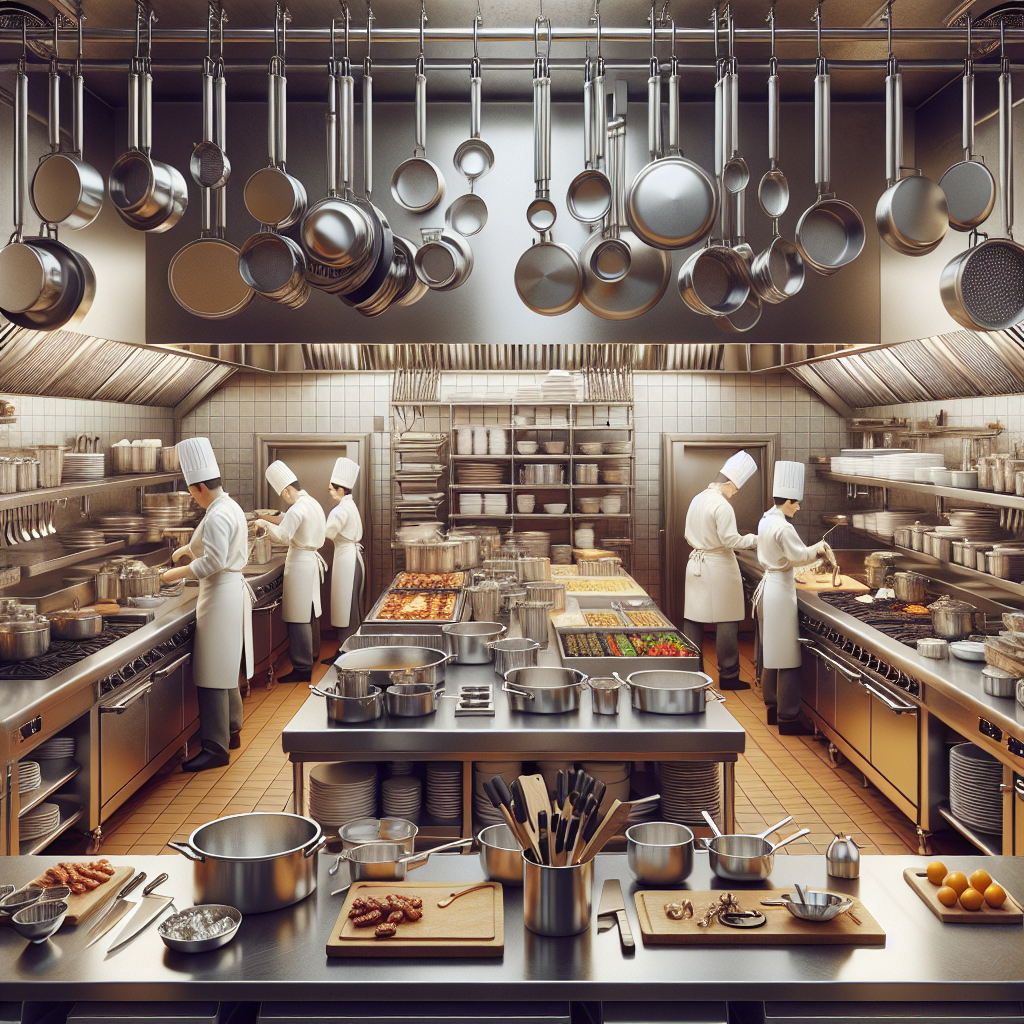The commercial kitchen is the heart of any food service operation, and its design plays a crucial role in the efficiency, safety, and success of the business. Over the years, the landscape of commercial kitchens has evolved significantly, moving from traditional setups to modern, tech-driven environments. This article will explore the differences between traditional and modern commercial kitchens, discussing the benefits and drawbacks of each, and providing guidance on how to choose the right approach based on your business needs.
Before we start to choose which is right for your business, we have to figure out the definition of each.
Traditional Commercial Kitchens are characterized by their conventional layouts and equipment. Typically, these kitchens are organized into specific stations for different tasks, such as prep areas, cooking stations, and dishwashing zones. The equipment is often more basic, focusing on durability and simplicity, with a strong emphasis on manual operation.
Modern Commercial Kitchens, on the other hand, are defined by the integration of advanced technology and innovative design. These kitchens often feature open layouts, multi-functional equipment, and smart appliances that can be controlled remotely or programmed to perform specific tasks. Efficiency, sustainability, and flexibility are key priorities in modern kitchen designs. If you are still confused about this, you can view our case studies, where SHINELONG has extensive experience in providing superior solutions for the modern business sector and it can help you learn more about what's modern commercial kitchens!
Differences Between Traditional and Modern Kitchens
1. Layout and Design
Traditional Kitchens: Usually follow a more rigid, compartmentalized layout. Stations are fixed, and the workflow is linear, which can sometimes lead to bottlenecks during peak hours.
Modern Kitchens: Favor open, flexible layouts that allow for a more fluid workflow. Equipment can often be moved or adjusted to accommodate different tasks, reducing downtime and increasing efficiency.
2. Technology Integration
Traditional Kitchens: Rely on manual operations and mechanical equipment. While reliable, these kitchens may lack the advanced features that can boost productivity and precision.
Modern Kitchens: Heavily incorporate technology, such as programmable ovens, smart refrigerators, and automated cooking devices. These innovations reduce labor costs and improve consistency in food quality.
3. Energy Efficiency
Traditional Kitchens: Often use older, less energy-efficient equipment. This can lead to higher utility bills and a larger carbon footprint.
Modern Kitchens: Designed with energy efficiency in mind. Energy-saving appliances, optimized lighting, and better insulation contribute to lower operating costs and greener operations.
4. Flexibility and Scalability
Traditional Kitchens: Less adaptable to changes in the menu or volume. Adjustments often require significant modifications or additional equipment.
Modern Kitchens: Built for flexibility. Multi-functional appliances and modular designs make it easier to adapt to menu changes or scale operations up or down as needed.
4. Cost
Traditional Kitchens: Generally have lower upfront costs due to the simplicity of the equipment and design. However, ongoing costs may be higher due to energy inefficiency and the need for more labor.
Modern Kitchens: Require a higher initial investment but offer long-term savings through reduced energy costs, lower labor requirements, and increased productivity.
Benefits and Drawbacks
Choosing the Right Approach
When deciding between a traditional or modern commercial kitchen, consider the following factors:
Business Type and Scale: A small, family-run restaurant might benefit from the simplicity and lower costs of a traditional kitchen, while a large, fast-paced establishment might find the efficiency and flexibility of a modern kitchen more suitable.
Budget: If initial budget constraints are a significant concern, a traditional kitchen might be the better choice. However, if you have the capital for a modern setup, the long-term savings and efficiency gains can justify the higher upfront costs.
Menu and Operations: If your menu requires frequent changes or if you need to scale operations quickly, a modern kitchen’s flexibility will be advantageous. For a stable, consistent menu with a focus on reliability, a traditional kitchen may suffice.
Energy and Sustainability Goals: Businesses with a strong focus on sustainability should lean towards modern kitchens, which are typically more energy-efficient and environmentally friendly.
When it comes down to it, both traditional and modern commercial kitchens have a place in today's foodservice industry. How you choose between the two depends on your specific business needs, goals and resources. By carefully considering the pros and cons of each approach, you can seek help from a professional commercial kitchen equipment supplier or find a reliable kitchen partner.





















